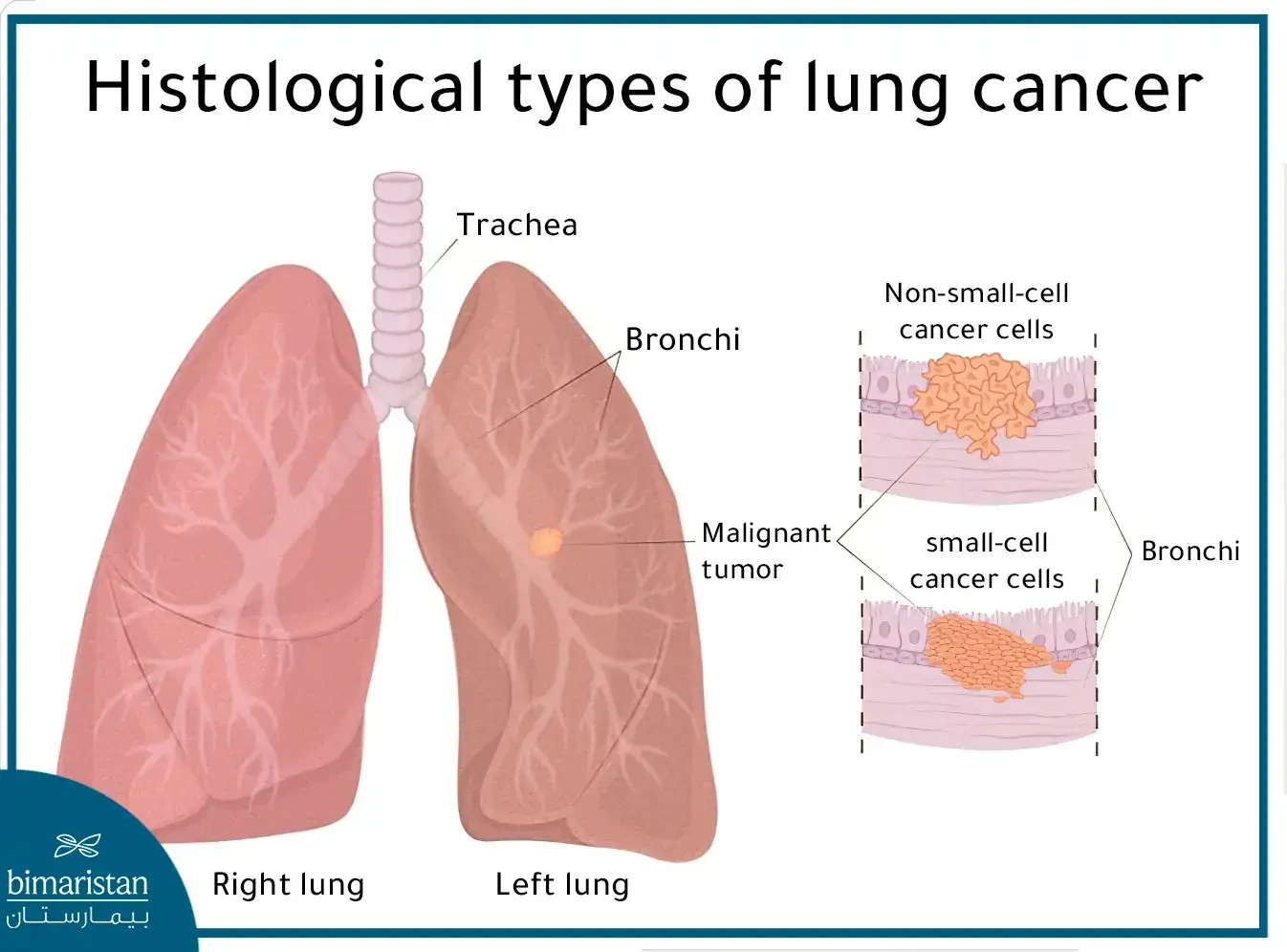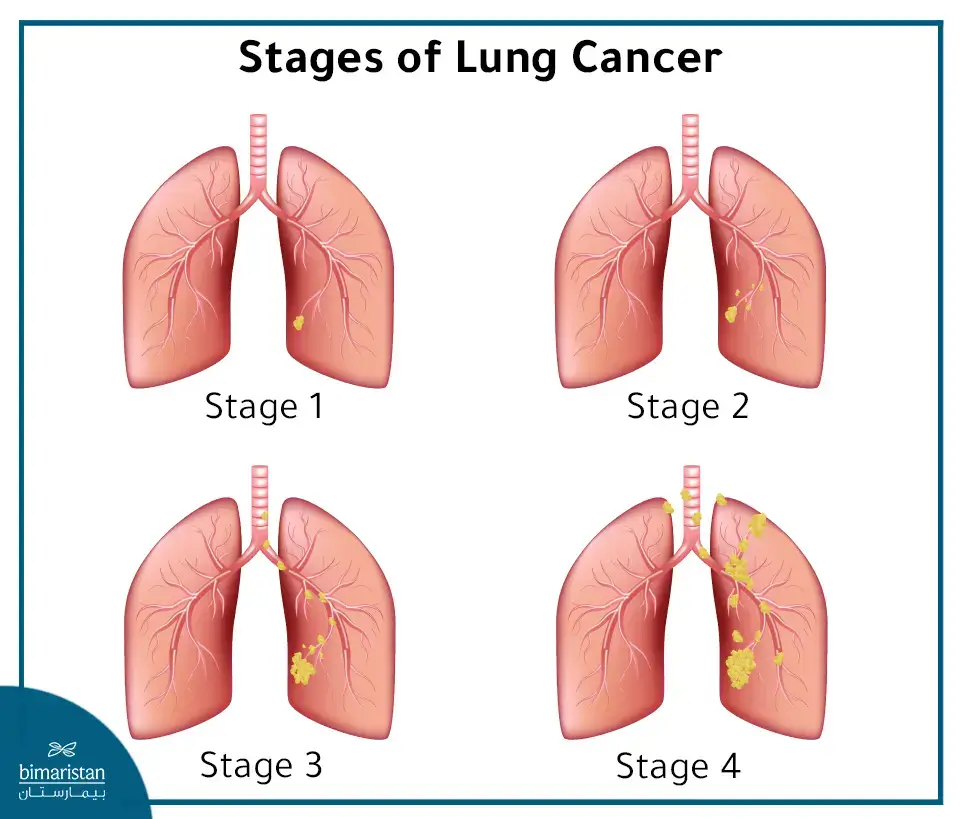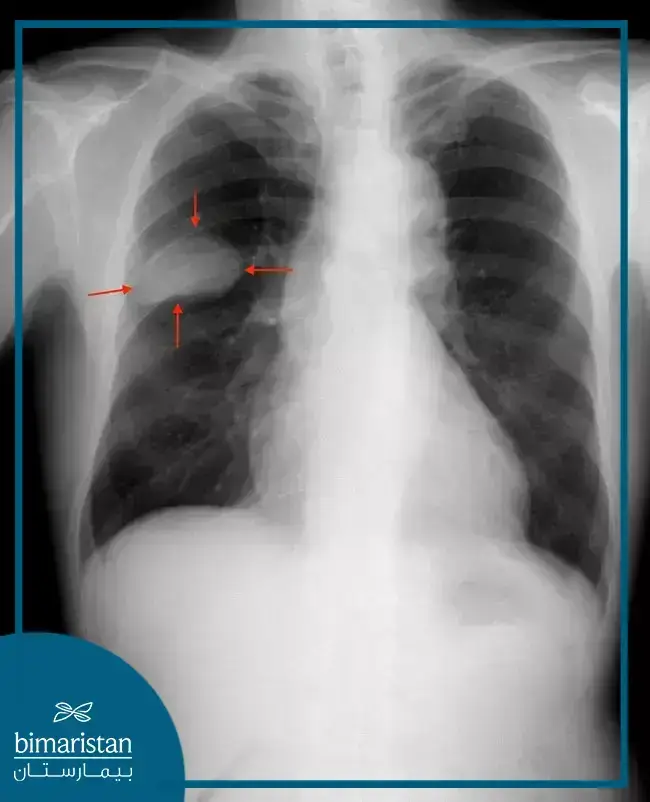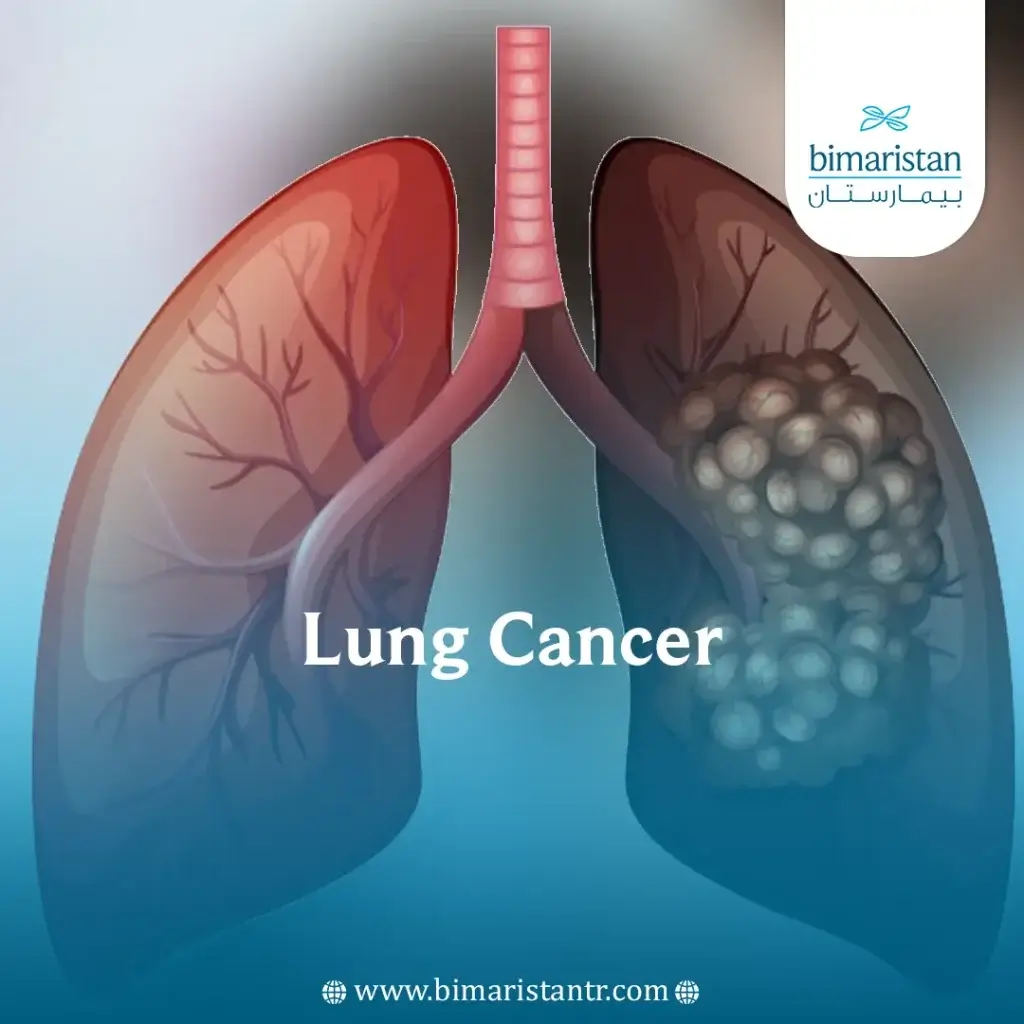Lung cancer is the most common cancer in the world, in addition to being the first cause of cancer death, so it is necessary to know about it.
Information about lung cancer
It is the second most common cancer in men in developed countries after prostate cancer and the second most common cancer in women in developed countries after breast cancer, in addition to the fact that 75% of those infected with lung cancer are between the ages of 50-70 years.
When lung cancer is initially diagnosed, 15% of lung cancers are in the early stage, while 85% of them have spread locally or to distant areas of the body.
The change in the incidence of cancer of the lung, whether up or down, is closely related to the rate of smoking, as it is the confirmed cause of lung cancer (the relationship between smoking and lung cancer).
?What is lung cancer
This is a type of cancer that occurs when normal lung cells turn into abnormal cells that begin to grow uncontrolled, leading to the formation of a cancerous tumor. This tumor can grow and interfere with the surrounding blood vessels, allowing it to spread to other body parts through the bloodstream or lymph. These metastases increase the severity of the disease and the difficulty of treating it.
Cancer does not necessarily have to originate in the lung to be called lung cancer. Cancer cells (metastases) may spread from different body organs to the lungs, especially from the breast, colon, rectum, head and neck, kidney, testicle, and uterus.
Lung cancer may be completely asymptomatic in the early stages. It is possible to discover it by chance. Symptoms often begin to appear when it begins to spread and press on nearby tissues.
The difference between benign and malignant lung tumors
Benign and malignant lung tumors are different types of tumors that can affect lung tissue. It is necessary to distinguish between them due to their difference in prognosis and extent of impact on the body. Here are the most important differences between them:
| Malignant lung tumor (cancer) | Benign Lung Tumor |
| Cancerous, meaning it spreads to other organs of the body, such as the brain, bones, and liver. | Non-cancerous, meaning it does not spread to other organs in the body. |
| It grows rapidly and is life threatening. | It grows slowly and does not pose a significant threat to life. |
| It is not surrounded by a capsule, i.e. it penetrates the surrounding tissues. | The tumor is surrounded by a capsule, i.e. it does not penetrate the surrounding tissues. |
| It requires immediate treatment, such as surgery, chemotherapy, or radiation therapy. | No immediate treatment required. |
Types of Lung Cancer
There are 23 histological types of lung cancer, but we will only explain the two main types, focusing on the common and important subtypes in medical practice. The main types include non-small cell lung cancer and small cell lung cancer.
Non-Small Cell Lung Cancer (NSCLC)
NSCLC accounts for more than 80-85% of lung cancer cases and grows and spreads more slowly than SCLC. This type of cancer is divided into several subtypes as follows:
- Adenocarcinoma of the lung: It is the most common subtype (40-50% of cases) and is usually peripheral in location. There is a progressive increase in its incidence worldwide (due to the spread of cigarettes during this period). A subtype of it, bronchoalveolar, is not associated with smoking or previous lung diseases.
- Squamous cell carcinoma of the lung: Its incidence is 30% and tends to be centrally located (unlike adenocarcinoma). It also spreads locally. This type is largely associated with smoking.
- Undifferentiated carcinoma (formerly large cell carcinoma of the lung): Its incidence is 10-20% and tends to be peripheral; this type is characterized by giving distant metastases to different organs.
- Adenosquamous carcinoma.
Small Cell Lung Cancer (SCLC)
SCLC accounts for about 10-15% of cases, it is considered the most dangerous type of cancer of the lung and the most prone to local and systemic spread (i.e., to different body systems) and is also distinguished by its high sensitivity to chemotherapy and radiation, but it tends to relapse after treatment, it is often associated with smoking.
Small cell lung cancer is divided according to its spread into two main stages, which are:
- Internal or limited stage: The cancer is limited to one-half of the chest in addition to its spread to several adjacent lymph nodes.
- Extensive stage: Here, the cancer has spread to some organs such as the brain, bone, and liver. Unfortunately, no patient has been recorded to live more than 30 months after reaching this stage of cancer.

Lung cancer stages
Lung cancer, like most types of tumors, is classified according to the TNM system, which depends on the size of the primary tumor and its spread to surrounding tissues (T), its spread to the lymph nodes (N), and its metastases away from the lungs (M). The basic stages of cancer of the lung include the following:
- Stage I lung cancer: The tumor is limited to the lung and has not spread to any adjacent tissues or even the lymph nodes.
- Stage II lung cancer: The tumor has spread to some lymph nodes in the same area.
- Stage III lung cancer: The tumor here has spread outside the lung to the chest wall and diaphragm muscles under the lungs, in addition to spreading to lymph nodes on the opposite side of the chest or to lymph nodes in the lungs.
- Stage IV lung cancer: The tumor has spread to distant parts of the body, such as the liver or bones, so it is called metastatic lung cancer or last-stage lung cancer, as it is considered the most advanced and dangerous stage.

Understanding the cancer stage is essential to determining the available treatment options and planning appropriate health care. Treatment options may include surgery, chemotherapy, radiation therapy, targeted therapies, and modern treatments such as specific and immunotherapies.
How to diagnose lung cancer
Diagnosing cancer of the lung includes several procedures and tests that help determine the presence of the tumor and determine its type and stage. Among the methods used in diagnosis are:
- Physical examination: This includes examining symptoms related to the lung and chest, including breathing and persistent coughing, in addition to any other signs and symptoms that may indicate the presence of cancer, such as weight loss that is not explained except by the presence of cancer.
- A simple chest X-ray (CXR) is a major diagnostic tool for lung cancer, but a normal image does not rule out cancer at all. This means that if we see a normal image and the patient’s symptoms are directed towards cancer, we do not rule out the infection. We may see a mass in the lung located peripherally and having a circular shape, but what we see most is an enlargement at the navel of the lung.

- CT scan with contrast injection: If the mass takes the contrast material, it will contain blood vessels, suggesting it is a tumor mass. If it does not, it is likely a water or fatty mass. This imaging gives us an idea about the nature of the material, its size, and its relationship with the surrounding tissues.
- Bronchoscopy with biopsy: This is the gold standard for confirming a diagnosis. Bronchoscopy is performed through the nose and throat. We take a biopsy if we see infiltrations or abnormal points in the bronchus. The biopsy is examined under a microscope to confirm the presence of cancer cells in the lung.
- Positron emission tomography PET scan: This is a mandatory method for any patient candidate for surgery. It is not used for diagnosis but to determine the spread of the tumor to other parts of the body.
- Taking a sample from the lung tumor with the help of radiation (often with the help of a CT scan).
- Magnetic resonance imaging MRI: It is often used in cases where a CT scan cannot be performed.
- Pulmonary function test: It is used especially when the patient is a candidate for surgery.
- Lung screening for smokers: This is a periodic examination for smokers between the ages of 55-80 who have a long smoking history with the aim of early detection of lung cancer; this is often done through a simple chest x-ray and a CT scan.
Lung cancer treatment in Turkey
In general, it is preferable to determine a customized treatment plan for each case of lung cancer based on the type and stage of the tumor as well as the patient’s condition and preferences. Determining an effective treatment plan requires a comprehensive evaluation by a specialized medical team, which may include diagnostic tests such as CT scan, MRI, and histological examination.
Turkey has advanced medical facilities and medical teams specialized in lung cancer treatment. It provides the latest technologies, surgical procedures, laser treatment, radiotherapy, and chemotherapy. It also provides early diagnosis services and advanced medical examinations that help detect lung cancer in its early stages.
Finally, we must remember that lung cancer is a serious disease that can affect the lives of many, and it is important to raise awareness and detect it early to reduce the risk of developing this deadly disease. We can reduce the likelihood of developing cancer of the lungs and increase the chances of recovery if we are infected by taking care of our health and adopting a healthy lifestyle.
Sources:
- American Cancer Society
- Johns Hopkins Medicine

